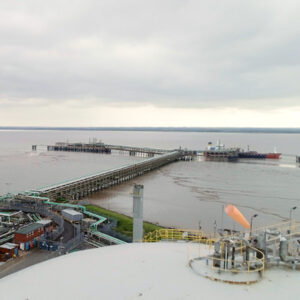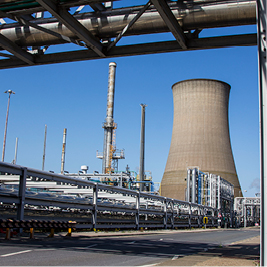

px delivered a cloud-based solution as part of the establishment of a 24/7 control room overseeing the commercial operation and monitoring of the SEAL pipeline.
High system availability – 99.9%+ Greater resilience Flexible work locationThis provided greater system reliability and resilience, leading to a far more agile response to business continuity events.
What We Did
The SEAL pipeline transports sales quality (methane) gas from the Elgin Franklin platform in the Central Graben Area of the North Sea to the dedicated SEAL module at the Bacton gas terminal on the Norfolk coast.
As part of the IT solution required to operate the SEAL pipeline, the highest system availability was seen as key. Therefore, all applications, systems and programs provided by our third-party vendors and our in-house ICT support, were developed for use and access via an on-demand technology service provided by a cloud provider.
In addition, and on reflection of the impact COVID has had on shift working, px wanted a flexible solution that wouldn’t limit the commercial shift team to a single office space and provide greater working from home capability, when needed. This was done via the provision of a disaster recovery kit to replicate the control room environment anywhere that has a network connection. This in turn ensures the continued safe operation and monitoring of the SEAL pipeline each day, every day, from anywhere in the UK and overseas.
Results



Delivering £17.8M savings over 10 years for a food & beverage manufacturer
£17.8M SAVING over 10 years <3 years Payback 3 * WASTE HEAT BOILERS & GAS ENGINES 2,000 kg/hr, 7.5barg Waste heat recovery boilers 3.355 MWe gas enginespx was commissioned by a large soft drinks manufacturer to complete a concept study and a Front End Engineering Design (FEED) study for its proposed 9.9 MWe Combined Heat and Power Plant (CHP) at its main manufacturing facility.
What We Did
The objective of the FEED study was to provide sufficient detail to allow a cost estimate of +/- 10% to be provided and also to enable an Engineering, Procurement and Construction Management (EPCM) contract to be entered into for the CHP Plant.
The output from the FEED study is to be utilised as a basis for the detailed engineering design to be undertaken by the EPCM contractor.
The commercial information gathered by the FEED study and from the customer was used to develop a 10 year financial model. This identified the potential savings, payback and IRR for the investment.
Results
The CHP plant will produce up to 20,000 kg/h, 7.5barg dry saturated steam and approximately 1500 kWth of hot water, which is supplied to an absorption chiller to provide a 1000 kWth of chilled process water.
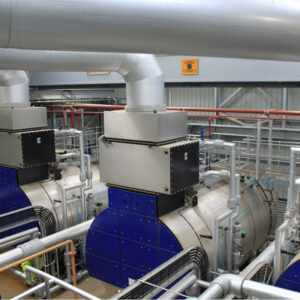


Delivering a Greenhouse Gas emission saving of more than 450 te CO2e per year at St Fergus Gas Terminal
450 te CO2e per year Annual Greenhouse Gas Emission saving 20% Processing over 20% of the UK’s gas supply <6 months Payback Periodpx delivered a Greenhouse Gas (GHG) emission saving of >450 te CO2e through the substitution of a fuel gas purge with nitrogen on a safety critical flare system.
What We Did
LP Flare System
The LP flare system provides a safe means of disposing of gas in emergency scenarios via a flare gas header, which is subsequently fed to a flare riser and eventually relieved to the atmosphere via a flare tip. To avoid air ingress into the flare header, the system is provided with a continuous purge which as per the original design of the flare system consists of hydrocarbon gas. The purge rate is determined to maintain a specified superficial velocity in the flare header.
Nitrogen Substitution
As part of px’s drive for continuous environmental improvement, optimisation work was undertaken to minimise the hydrocarbon purge rate to the minimum technical limit. This initially provided a 20% reduction in flare emissions. Further work was then undertaken to test the practicality of substitution of the purge gas with nitrogen. Two elements had to be satisfied, the use of nitrogen had to be demonstrated to be safe and to demonstrate that the operation was Best Available Technology (BAT).
A test program was developed and undertaken by the asset team. The tests were successful, and the modification was made permanent through the px Management of Change process. The modification included regular sampling of the flare emissions to confirm that the nitrogen purge is still BAT.
Results


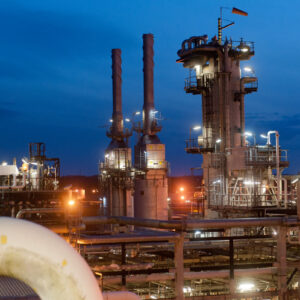
Harnessing digital technologies to provide cost-reduction and process-efficiency improvements at Saltend
4,000 hours saved 94% reduction in inspection backlog 56% increase in maintenance executionOur five keys elements are:
Digital Solutions – Enhancing operator efficiency and safety through carefully selected digital tools
Advanced Analytics – Promoting accountability throughout by predicting month-end results in real time
Execution Optimisation – End-to-end execution workflow review to unlock process efficiencies
Automation – Systematic review and targeted elimination of repetitive business tasks & manual data gathering
Integrated Information – Integration of any data anywhere to discover hidden inefficiencies
Using these principles px Energy Solutions has successfully implemented a range of time- and cost-saving initiatives that are being introduced across px Group.




Since transition into px Group’s stewardship in 2016, which has included management of the commissioning process, with the help of px Energy Solutions the Beckton Combined Heat and Intelligent Power plant has achieved consistent improvement in performance metrics – ultimately achieving 100% engine availability in four separate months during 2021.
£300k in extra profit 1,688MWh additional output through improving engine availability 67% to 93% increase power recovery from turbo expandersBuilding on innovative heat recovery processes utilising turbo expanders, px identified and implemented processes to optimise plant operations and increase plant run time and efficiency.
This included centralising plant dispatch processes to the control room, to enable operators to be much more responsive to plant fluctuations. As well as this, we reimagined labour-intensive reporting processes. In doing so, reducing one spreadsheet-based process from 8 workbooks and 29 tabs to an automated solution consisting of 2 output tabs. This has realised genuine resource saving and introduced a more robust process, less prone to human input error.
px utilised in-depth knowledge of OFGEM processes to ensure Renewable Obligation Certificates (ROC) and Renewable Energy Guarantees of Origin (REGO) amounts are fully realised to guarantee a maximum revenue for the owners.
Results
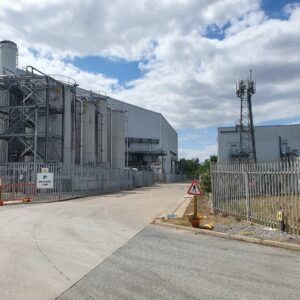


Reducing steam losses at Saltend by 30% in two years
30% reduction in steam losses in 2 years £2.9M unaccounted steam identified 83 steam traps multi-stage project to repair and upgrade 83 steam trapspx successfully delivered 30% reduction in steam losses at Saltend Chemicals Park in 2 years, whilst identifying over 115,000 tonnes per year of unidentified or unaccounted steam.
What We Did
The project, delivered by px, was centred on three core elements:
Technical Review
px identified 83 steam traps as key contributors to unnecessary losses and implemented an eight phase, multi-stage project to repair and upgrade them.
Operational Review
A range of new operating procedures were produced and adherence to the new operating methodology was reinforced by the successful implementation of a new steam monitoring and optimisation display embedded into the site’s PI Vision system. This display used real-time data to calculate live steam losses at all pressures to provide key information to the operations and management teams to better decisions could be made.
Commercial Review
px carried out a detailed review of the steam purchase and supply agreements to fully understand contractual operational parameters. A new commercial strategy was developed to optimise cost and steam redundancy operations within the contractual parameters ensuring availability in excess of 99%. At the same time a new commercial model was developed to facilitate financial forecasting of steam profitability at Saltend for different market prices and operational scenarios. This model was embedded within the PI Vision live data displays to facilitate better operational management.
Results
